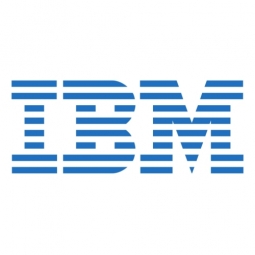Customer Company Size
Large Corporate
Region
- America
Country
- United States
Product
- IBM Spectrum Virtualize™
Tech Stack
- Cloud Storage
- Data Virtualization
Implementation Scale
- Enterprise-wide Deployment
Impact Metrics
- Cost Savings
- Productivity Improvements
Technology Category
- Infrastructure as a Service (IaaS) - Cloud Storage Services
Applicable Functions
- Business Operation
Use Cases
- Infrastructure Inspection
- Regulatory Compliance Monitoring
Services
- Cloud Planning, Design & Implementation Services
About The Customer
The customer is a U.S. government organization. The organization was finding it increasingly hard to fulfill its core mission as workload grew. Years of deploying disk arrays on a project-by-project basis had created a sprawling, inefficient data storage infrastructure. Each application typically had a separately managed silo of storage that could not be shared with new applications. These islands of storage were typically either bursting at the seams or significantly under-utilized—causing performance issues in the first scenario, and representing wasted investment in the second. The costs for acquiring and operating storage systems from multiple different vendors within this environment were high and rising, and the organization recognized that its essentially unplanned approach to data storage was unsustainable.
The Challenge
A U.S. government organization was struggling with a sprawling, inefficient data storage infrastructure due to years of deploying disk arrays on a project-by-project basis. Each application had a separately managed silo of storage that could not be shared with new applications. These islands of storage were either bursting at the seams or significantly under-utilized, causing performance issues or representing wasted investment. The costs for acquiring and operating storage systems from multiple different vendors were high and rising, and the organization recognized that its unplanned approach to data storage was unsustainable. The need to maintain multiple different hardware and software configurations meant that operating costs for storage were too high. The organization also had islands of both under- and over-utilization: a large proportion of its investment in storage capacity was doing no useful work while in other areas it was struggling to scale its arrays to meet growing needs.
The Solution
The government organization engaged Unisys to build and run an enterprise-class private storage cloud. Unisys understood the organization's issues and proposed a solution to re-use existing assets instead of ripping and replacing. This approach cut both the initial and ongoing costs. At the heart of the Unisys solution was the introduction of a storage virtualization layer, which pools the existing capacity into a single flexible resource with standardized management for all underlying arrays. In the first two years of the contract, the government organization worked with Unisys and IBM to migrate 8 PB of installed capacity into the private storage cloud—physically located in the existing data centers. Thanks to thin provisioning in IBM Spectrum Virtualize, the initial landscape needed only 5 PB of installed capacity, enabling the retirement of some arrays.
Operational Impact
Quantitative Benefit

Case Study missing?
Start adding your own!
Register with your work email and create a new case study profile for your business.
Related Case Studies.

Case Study
Remote Monitoring for Environmental Compliance
Emerson wanted to provide a connected environmental analyzer to their customers. They wanted to leverage IoT technologies to provide a software solution that was easy to use, real-time and centralized. Compliance with pollution control board guidelines and the ability to remotely calibrate and troubleshoot these devices was the primary objective. Requirements - Centralized Remote Monitoring. - IoT Based Smart Environmental Analyzers. - Remote Calibration and Troubleshooting. - User Friendly Application. - Reporting & Dashboards. - Compliance with pollution control board guidelines.

Case Study
ELI LILLY ADOPTS MICROMEDIA’S ALERT NOTIFICATION SYSTEM
Pharmaceutical production is subject to a strict set of enforced rules that must be adhered to and compliance to these standards is critically necessary. Due to the efforts of WIN 911’s strategic partner Micromedia, Lilly was able to adopt an alarm notification infrastructure that integrated smoothly with their existing workflows and emergency hardware and protocols. These raw energy sources enable the industrial process to function: electricity, WIN-911 Software | 4020 South Industrial Drive, Suite 120 | Austin, TX 78744 USA industrial steam, iced water, air mixtures of varying quality. Refrigeration towers, boilers and wastewater are monitored by ALERT. Eli Lilly identified 15000 potential variables, but limitations compelled them to chisel the variable list down to 300. This allowed all major alarms to be covered including pressure, discharge, quantity of waste water discharged,temperature, carbon dioxide content, oxygen & sulphur content, and the water’s pH.

Case Study
The Home Depot's IT Innovation with Nutanix: A Case Study
The Home Depot, the world's largest home improvement retailer, was facing a significant challenge in enhancing the performance and scalability of its IT infrastructure while reducing the total cost of ownership (TCO). The company's traditional approach of upgrading to faster servers and more efficient storage was no longer sufficient. The Home Depot needed a more innovative solution to reduce TCO and improve operational efficiency for its vast retail store and e-commerce business. The company was also looking for a way to consolidate its server, storage, and virtualization teams into a single operations group to optimize and manage the entire infrastructure stack from a single console. The challenge was to find a solution that would allow them to achieve these goals while also enabling them to quickly deploy new applications to internal users and customers.

Case Study
IoT Solutions Give Commercial Fishing Real-time insights
Technology to support vessels in the commercial fishing industry had not changed significantly since the advent of radar. Over the past 40 years commercial fishing in the United States has continued to be one of the most active, yet regulated industries. The combination of federal regulations and lack of technology created an opportunity for Faria Watchdog to go-to-market with a solution.

Case Study
IFFCO Boosts IT Performance and Innovates Agriculture with Oracle Cloud
Indian Farmers Fertiliser Cooperative Ltd. (IFFCO), the world’s largest manufacturer and marketer of fertilizers in the cooperative sector, was facing several challenges in its quest to innovate and improve the livelihood of farmers in India. The organization had recently launched a new product, nano urea, which brought new demands to IFFCO’s cloud computing needs. The organization needed a reliable cloud vendor to support the processes of 6–7 new manufacturing plants during the upcoming year, enhancing its production capability 300–350 million bottles of nano urea to meet increasing demand. IFFCO’s cloud adoption was driven by a need to innovate. The organization wanted capabilities for a dynamic business that can adapt to the changing needs of the market while growing fast. However, it was inhibited by rigid on-premises data center deployments and the overhead of maintaining legacy systems. IFFCO wanted to apply the elasticity and availability of cloud for improving overall performance of applications at lowest possible operational overhead. Lastly, IFFCO needed to provide the benefits of its technology to all its stakeholders, including employees, members, transporters, and farmers, some of whom have limited literacy. To accommodate all stakeholders, IFFCO wanted to add a voice interface to its applications.

Case Study
Revamping EE's Legacy ERP: A Case Study on BT's Strategic Transformation
EE, even after its merger with BT, was operating its ERP estate on legacy infrastructure, hosted on the premises of a third-party supplier. This outdated system resulted in a volume-based operational model, higher time to market, longer delivery cycles, and unsatisfactory customer experience. BT recognized the need for a strategic transformation of these aging ERP systems and sought a partner who could proactively manage application services. The partner was also expected to handle development requirements associated with application management services, drive accountability, and ownership with a time and target-driven transformation of these services. BT's primary goals were to improve customer experience, reduce cycle time, and measure these improvements with precision.







